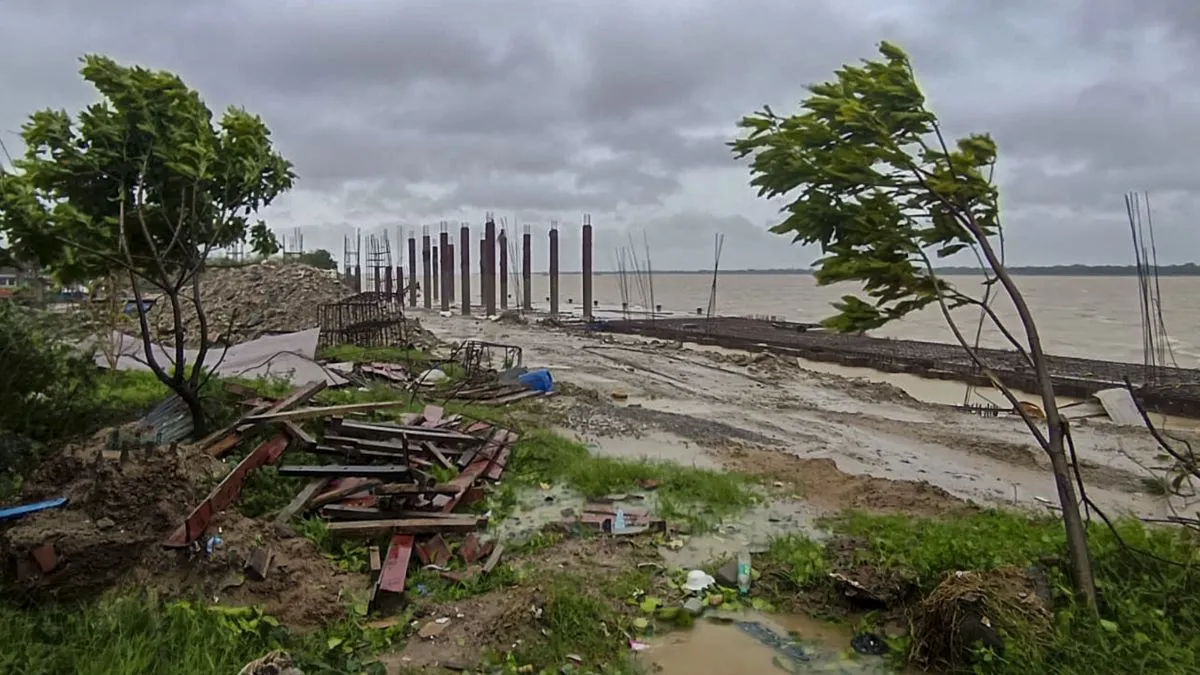
Cyclone Fangal may take a dangerous form in the coming days.
New Delhi: The Indian Meteorological Department has said that the deep depression over the south-west Bay of Bengal can turn into a cyclone today i.e. on November 27. The Meteorological Department says that in the next 2 days this cyclone may move towards Tamil Nadu via the coast of Sri Lanka. This cyclonic storm has been named Fangal and there is a lot of concern regarding it in the southern states of the country. But have you ever wondered how cyclones are named?
How are cyclones named?
According to the World Meteorological Organization, weather forecasters give each tropical cyclone a name to avoid confusion. Generally, tropical cyclones are named according to rules at the regional level. For the Indian Ocean region, a formula for naming cyclones was agreed upon in 2004. Thirteen countries in the region gave a set of names, which are given one after the other when a cyclonic storm occurs. While choosing the names of cyclones, it is kept in mind that they should be easy to remember, easy to pronounce and should not be objectionable or controversial. Their names are also chosen from different languages so that people living in different areas are familiar with them.
How was the name ‘Fengal’ proposed?
The current list of cyclone names was prepared in 2020, with each member state contributing 13 names. These names are used in rotation. No name is reused, meaning every cyclone that occurs in the Indian Ocean region is known by a different name. For example, the name ‘Fengal’ was suggested by Saudi Arabia. After this, the next cyclone that comes will be named ‘Shakti’ and this name has been suggested by Sri Lanka. At the same time, Thailand is next in the queue and it has named the cyclone after ‘Shakti’ as ‘Montha’.
Who names cyclones in the Northern Indian Ocean region?
in the northern Indian Ocean cyclones are named by the member countries of the World Meteorological Organization (WMO) and the United Nations Economic and Social Commission for Asia and the Pacific (UNESCAP) panel. Its member countries include Bangladesh, India, Iran, Maldives, Myanmar, Oman, Pakistan, Qatar, Saudi Arabia, Sri Lanka, Thailand, United Arab Emirates, Yemen. Each member country provides a list of possible names, which are used sequentially when a cyclone approaches the region. This system has been in place since 2004 so that storms can be identified easily and any communication regarding it can be done in a better way.
Cultural relevance of cyclone names
In recent years, the IMD has started including names with cultural significance in the list of names. For example, the name Amphan, which means sky in Thai, was used for the cyclone that hit West Bengal in 2020. The IMD’s tradition of naming cyclones is a way of involving the different countries of the region and creating a sense of community around the shared experience of tropical storms. These naming systems have evolved over time.
What was the old pattern of choosing names?
Names of cyclones were previously chosen alphabetically, with a name given for each letter of the alphabet. However, this system was not effective because it created a lot of confusion and people found it difficult to remember names. In such a situation, the current system of pre-determined names was started. In the Atlantic and Southern Hemisphere (Indian Ocean and South Pacific), tropical cyclones receive names in alphabetical order, with men’s and women’s names alternating.
In the northern Indian Ocean, countries began using a new system for naming tropical cyclones in 2000. These names are given in alphabetical order according to the country and the names of men and women are kept alternately. These lists of names are proposed by members of a specific region of WMO’s national meteorological and hydrological services and approved by the respective tropical cyclone regional bodies at their annual or biennial sessions.





















